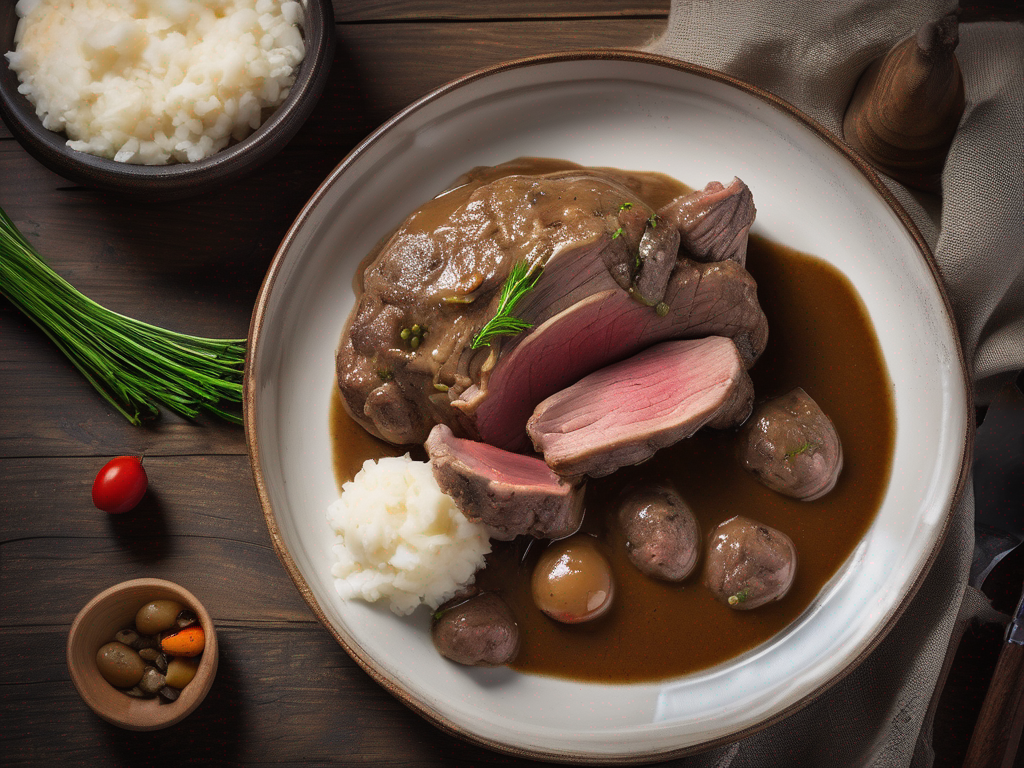
Is My Gravy Lamb Homemade Bad? How to Tell if Your Homemade Gravy Lamb Has Gone Bad
Get Your Free Food Safety Cheat Sheet
30 most common foods with instant answers. Print it and stick it on your fridge—completely free!
Is My Gravy Lamb Homemade Bad? How to Tell if Your Homemade Gravy Lamb Has Gone Bad
Homemade gravy lamb is a delicious and comforting dish that many people enjoy making at home. However, like any other food, gravy lamb can go bad if not stored or handled properly. In this blog post, we will discuss how to tell if your gravy lamb homemade has gone bad and provide you with some practical tips on food safety and storage. (Gravy lamb homemade)
Signs of Spoiled Gravy Lamb Homemade
Homemade gravy lamb can spoil if it is not stored at the correct temperature or if it is kept for too long. Here are some signs that your gravy lamb homemade may have gone bad:
1. Foul Smell
- If your gravy lamb homemade has a strong, foul odor that is different from its usual smell, it may be a sign that it has spoiled.
- A sour or rancid smell is a clear indicator that the gravy lamb is no longer safe to eat.
2. Mold Growth
- If you see any mold or mildew on the surface of your gravy lamb homemade, it is a definite sign that it has gone bad.
- Mold can produce toxins that are harmful if ingested, so it is crucial to discard any gravy lamb with visible mold growth.
3. Changes in Texture
- Spoiled gravy lamb may develop a slimy or mushy texture.
- If the gravy lamb feels slimy to the touch or has a strange consistency, it is best to throw it away.
4. Off-Color
- Fresh gravy lamb should have a rich, brown color.
- If your gravy lamb homemade has changed color significantly or has dark spots, it may be an indication of spoilage.
5. Taste Test
- If you are unsure whether your gravy lamb homemade has gone bad, it is best to perform a taste test.
- If the gravy lamb tastes off or has a strange flavor, it is best to err on the side of caution and discard it.
Tips for Food Safety and Storage
To prevent your homemade gravy lamb from spoiling, here are some essential food safety tips to keep in mind:
1. Proper Storage
- Store your gravy lamb homemade in an airtight container in the refrigerator.
- Make sure to consume the gravy lamb within 3-4 days to ensure its freshness.
2. Labeling and Dating
- Always label your gravy lamb homemade with the date it was cooked.
- This will help you keep track of how long the gravy lamb has been in the refrigerator and when it should be discarded.
3. Reheating Safely
- When reheating your gravy lamb, make sure it reaches an internal temperature of 165°F (74°C) to kill any harmful bacteria.
- Avoid reheating the gravy lamb multiple times, as this can increase the risk of foodborne illness.
4. Proper Hygiene
- Wash your hands thoroughly before and after handling gravy lamb.
- Use separate cutting boards and utensils for raw meat to prevent cross-contamination.
Conclusion
In conclusion, it is essential to know how to tell if your gravy lamb homemade has gone bad to avoid foodborne illnesses. By being aware of the signs of spoilage and following proper food safety practices, you can enjoy your homemade gravy lamb safely. Remember to store your gravy lamb properly, pay attention to its smell and appearance, and always practice good hygiene when handling food. Enjoy your delicious homemade gravy lamb with peace of mind knowing that it is safe to eat. (Gravy lamb homemade)
Authoritative Food Safety References
These agencies and university labs inform every tip and health precaution we publish.
USDA FoodKeeper – Cold Storage Guidelines
Official refrigerator, freezer, and pantry timelines maintained by the U.S. Department of Agriculture.
Visit USDA FoodKeeperFDA Produce Safety Rule & Grower Guidance
Field-to-fridge handling practices that prevent contamination of fruits, vegetables, and leafy greens.
Visit FDA Produce SafetyCDC Foodborne Illness Prevention Hub
Surveillance-backed guidance on pathogens, symptoms, and steps to reduce foodborne illness risk.
Visit CDC Food SafetyUC Davis Postharvest Technology Center
University research detailing optimal storage atmospheres for produce after harvest.
Visit UC Davis PostharvestPenn State Extension – Home Food Preservation & Safety
Peer-reviewed extension bulletins on safe canning, chilling, and reheating practices.
Visit Penn State ExtensionGet Your Free Food Safety Cheat Sheet
30 most common foods with instant answers. Print it and stick it on your fridge—completely free! Want more? Upgrade to the complete guide with 70+ foods.
Scan your food directly and get instant safety info using our AI-powered camera feature.